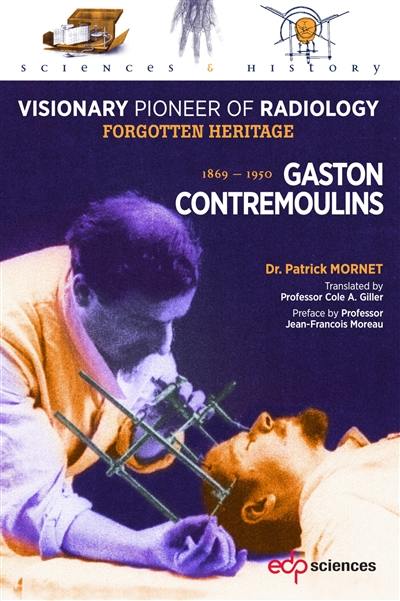
Collection(s) : Sciences & histoire
Paru le 10/04/2019 | Broché 188 pages
Public motivé
translated from the French by professor Cole A. Giller | preface by professor Jean-François Moreau
Visionary pioneer of radiology
Forgotten heritage
How could a self-taught scholar of the calibre of Gaston Contremoulins be forgotten ?
Driven by his fascination with photography and the discovery of X-rays by Roentgen in 1897, he was the first to invent a device capable of locating intracranial foreign bodies. He thus anticipated the development of stereotaxis, so crucial to modern medicine half a century later. He was recognized and appointed director of the main radiology department of Necker Hospital in Paris. Yet he was not a doctor !
His design of a complete radiological technology for three-dimensional visualization was a work of genius, foreshadowing the principles of the CT scanner. His interest in orthopedic problems led him to develop sophisticated uses of radiographic images to manufacture prostheses and fusion instruments, thus founding a field he called « radiosurgery ». He was a pioneer in radiation protection measures, fighting the widespread and erroneous belief that X-rays were harmless !
Although he was vigorously defended by the Academy of Science and the great surgeons of the Paris Hospital, his enemies managed to erase his name and work from the historical archives.
This work by Patrick Mornet places Contremoulins in his rightful position in the history of radiology : at the front !
Doctor Patrick Mornet is intern of Hospital of Paris and former chief of internal medicine at the Hospital Center of Saint-Germain-en-Laye. His study is based on the personal archives of Contremoulins, his numerous publications in the « Académie des sciences » and in the « Académie Nationale de Médecine » of Paris, as well as on the testimony of close acquintances of the great man.